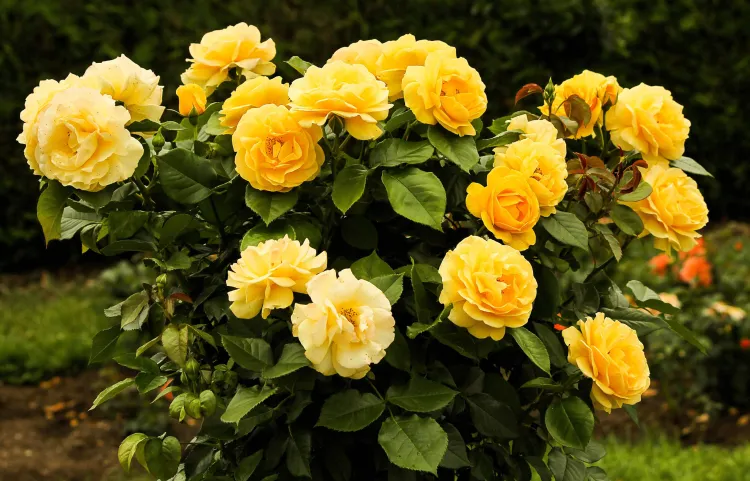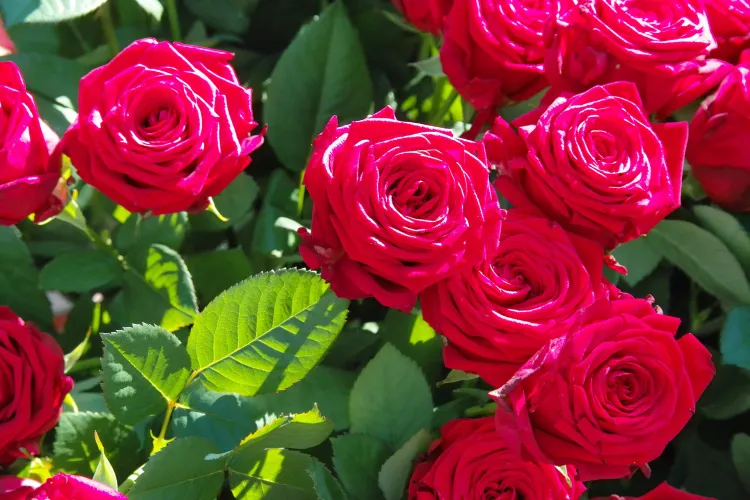We’re all familiar with roses (Rosa): their fragrance, their flowers, their thorns. If you’re thinking about adding a rose (or roses) to your garden this year, it might surprise you to discover that there’s more to your choice than color. Roses come in a seeming multitude of sizes, growth habits and flower types—not to mention hardiness, color and other considerations.

First, you’ll need to know your United States Department of Agriculture Plant Hardiness Zone so you can choose a rose variety suitable for the winter temperatures at your location. Roses (and other perennial plants) are labeled with their hardiness zones to help you make your selection. In general, roses are hardy in Zones 3 to 11, depending on the specific variety. You can determine your hardiness zone at https://planthardiness.ars.usda.gov.
Hybrid and old-fashioned tea roses represent the classic cutting rose with their bushy, upright growth and long stems, each bearing a single flower with a sweet fragrance. You can expect them to grow 4 to 6 feet high and 2 to 3 feet wide.
Floribunda roses have a more compact, bushier growth and are about 2 to 4 feet high and wide. They offer an abundance of continuously blooming clusters of smaller flowers. Grandiflora roses offer large, showy flowers on tall, upright canes reaching 6 to 7 feet in height.

True to their name, climbing roses will need support. They can be trained to climb over an arbor, up a trellis or along a fence. They offer plenty of flowers along their 10- to 20-foot long canes.
Shrub roses are a low-maintenance option. They grow upright, bushy and spread with some varieties growing up to 9 feet high and wide. Flowers are 2 to 3 inches wide.
Groundcover roses grow low and spread. With their continuous bloom period of small- to medium-sized flowers, they are a colorful option to cover bare ground or to use for erosion control on banks. They grow only 1 to 2 feet high.
Rambler (also known as rambling) roses are vigorous growers with long, flexible canes up to 20 feet in length. Flowers are small but plentiful, but unlike other roses, they may bloom only once during the season. Ramblers make a good choice if you’re looking for a wild or natural look for your garden.
If you’re short on space, consider a polyantha rose bush. They offer compact growth (2 to 4 feet high) with abundant sprays of small flowers. They bloom throughout the season and offer a subtle fragrance.
Miniature roses are yet another option. They have a compact, bushy growth habit and average between 12 to 24 inches tall, with some growing as tall at 3 feet. True to their name, flowers are small, less than 2 inches wide, but they make up for what they lack in size with their strong, sweet fragrance.
For a well-tended, manicured look, consider a rose standard, also called a tree rose. As the name implies, these have a long, leafless cane with a rose on top, giving the appearance of a shaggy lollypop. Tree roses are formed by grafting a rose atop the 2- to 3-foot tall “trunk.” While a tree rose might require more care than other roses, its charm and added drama may make it a desirable choice.
There is one rose you’ll want to avoid: multiflora rose (Rosa multiflora). This invasive rose is classified as a noxious weed in Vermont. Brought to the United States first for use as root stock for grafted roses, then later for use in erosion control and as living fences, its invasive growth habits have made it unwelcome in many states.
For information on planning a rose garden, see https://go.uvm.edu/rose. For help with pest and disease problems, go to https://go.uvm.edu/rose-problems.
